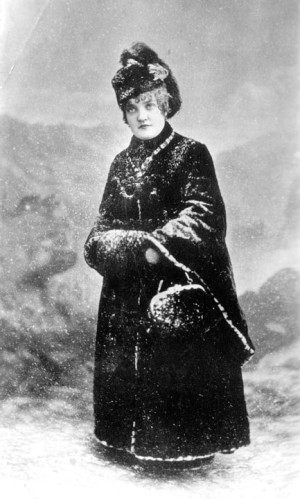By John Mattingly
With the playoffs going full force and the Super Bowl on the horizon, my mind wandered back to many years ago when my wife and I got married. We made a deal: I would go to Roman Catholic mass with her on Sunday morning if she would watch football with me on Sunday afternoon.
The deal lasted almost two months, withering in December just ahead of the playoffs – which, to me, was basically incomprehensible given the high stakes of each game – but our deal indeed faded away as neither of us could understand the other’s devotion. I tried to salvage it by pointing out that American football is actually a religion and that Roman Catholicism in those days appeared to be a sport played by old men and young boys. Okay, that was mean. But she pointed out that football players did a lot of hugging (sometimes while lying on the ground) and patting each other on the rump. She had a point.
I found Roman Catholicism repetitive and difficult (they say the same things every Sunday – and I have bad knees from playing wide receiver, so praying was difficult), and my wife leveled the same criticism at football (Why was that an illegal formation? They all look the same to me). No wonder: No one really understands all the rules of American Football, least of all the refs, and no one fully understands the wondrous cruelties of The Creator, least of all the priests.
Subsequently, my wife has strayed from Roman Catholicism to Buddhism, and I believe her brief exposure to football might have had something to do with it. As for myself, I’m still watching football on TV, and my brief exposure to Roman Catholicism increased my understanding of the game.
Going to mass before watching a game illuminated the legal and spiritual structures of the game. Many of the penalties in football are stated in terms of law: illegal shift, illegal formation, illegal return, illegal substitution, illegal motion, illegal use of hands and so forth. It’s as if the football field is a sovereign entity with an executive and legislative branch, backed by an elaborate judiciary enforcing its laws. There are, in fact, 32 officials in a pro American football game and only 22 players legally on the field of play, a stat that emphasizes the importance of following the law.
Then there are penalties suggestive of morality: false start, neutral zone infraction, encroachment, pass interference, intentional grounding, offensive holding, personal foul, unnecessary roughness and so forth. The nature and structure of football’s penalties make it much more than a game. It is a sacred domain in American culture reflective of Americans’ love of law and spirit. A recent ad for the NFL playoffs has a huge, illuminated insignia of the NFL cast over the entire USA, as if to brand it for good.
[InContentAdTwo]
Thus it is: American football is a sacred cultural institution at all levels of play, from pick-up games at a park, to pee-wee games, to Friday Night Lights, to the college farm teams, to the pros. Like Roman Catholicism, it’s hierarchical. It may not be coincidence that the population of the Vatican is very close to the number of players allowed on the active roster of the sum of all the professional football teams in America.
My own attraction to football goes back to playing games on the grass in front of my grade school, sometimes as few as two-on-two, and later in junior high and high school. The chill in the air, the clash of padding, the lessons of teamwork, the cheering, the lights, the grass in your face as you wait for the pile to lift. I did not go to college until age 50, so I didn’t walk on. Today, watching the game is entertaining, and the athleticism is often stunning.
Even though I’ve never fully understood all the finer rules of football, I’ve liked to watch it on TV from the time we had a black-and-white twelve-inch set in the basement until today. I’m what you might call a middling fan, not a lunatic. I don’t have a giant, high-definition TV. Just a 26-inch set with regular color and a DVR so I can skip the commercials and watch a football game in about an hour. It also helps to have commentators explain the particular rule impacting a play and explain it in slow motion with arrows and circles.
I go to very few games at the stadium because the ticket prices have gone berserk, and visibility is better on TV. That said, I understand that sitting on a cold, hard bench with a bunch of crazy, beer-drinking hooligans is part of football’s sacred domain, just as explaining how these mongrels managed to make it in the human gene pool is a challenge for religion. So I go to a game about once every three years as penance.
I don’t wear numbered jerseys around the farm shop, and I don’t get deeply interested in the personal drama of certain players. I think they’re all overpaid, so I relish it when a guy who was delivering pizzas a week ago gets on the roster for a few thousand bucks, stepping in for a guy making a hundred million dollars, and then outperforms him.
The talent level is increasing so fast at the college and high school levels that the smart pro teams who don’t draft superstars will probably do fine in the future, as the correlation between salaries and success is being diluted by the excess of talent. In other words, average is becoming obsolete. Players are either phenomenal or they aren’t playing.
I don’t play fantasy football, but I predict in this column, right here, in writing, that fantasy football will replace actual football on or before the year 2025, for three reasons:
1. The extraordinary athleticism of football players is headed toward an omega point, such that they are now a serious, mortal danger to each other. Not that they haven’t always been in mutual danger. Football has always been a serious contact sport, but when you look at the replays of games from 30 years ago, not to mention 50 years ago, the pros of those days look like high school players today. The hulk, bulk and speed of players today greatly increases the risk of injury.
Recent revelations about the long term consequences of concussions is a primary case in point. But when you look at the players today, how big, fast, strong, combative and serious they are, it’s clear that injuries of all kinds will increase going into the future. Prohibitions against “hitting high” will lead to “hitting low” and thus more leg injuries, a fact already appearing on the stat sheets. As this trend toward more injuries and more serious injuries continues, the liabilities will eventually overcome the benefits. Parents will become less apt to allow their kids to play, and the NFL will be facing huge lawsuits.
2. Arguments and whining over the calls of refs is also trending toward an omega point, such that the officiating of games will soon be taken away from the inevitable fallibility of human refs. During almost every game, I hear a football pundit admonish a bad call by a ref, even the replay refs, lamenting the incredible impact that one bad call can have on a team’s entire season, or a single player’s multimillion dollar career. With millions at stake with every play, it will soon be time to bring in the robots and computers to do the officiating.
The fallibility of the refs obtains, ironically, from the advent of replay itself, which forced refs to rule with digital accuracy. The price of accuracy with every call leads in a lot of niggling and obsessing over small points of action that slow the game and, frankly, cause the game to become boring. Fans sometimes have to wait 5 or 10 minutes in the middle of a rough and tense game to find out, for example, if a single molecule of a player’s toe touched a boundary line or not.
The technology for delegating the job of officiating American football to technology already exists in the form of micro sensors and video processors that can be inlaid into every football field. Think how satisfying it will be to faithful fans of the game to know that every call is made with absolute impartiality and accuracy. Thank The Creator: at last, no more bad calls. It does mean, however, that we will have to play Pink Floyd’s Welcome to the Machine at the start of every game instead of the national anthem.
3. Finally, the convergence of these two omega points – injuries/liabilities and intolerance for the fallibilities of human officiating – will, over time, stimulate the already advancing world of game simulations. It won’t be long before this technology will create such convincing and entertaining simulations of football games that fans will eventually prefer them to the real thing. I have seen some of these football sims in big box stores, and from a distance, they are already quite convincing, and processing power is still following Moore’s Law.
The simulations will be more reliable. There will be no injuries, no players going to jail for fighting dogs, or getting in motorcycle accidents, or shootouts, or ugly domestic situations. And the simulations will be infallibly accurate – no bad calls – which appeals to the American affection for the accurate application of rules. And finally, the possible outcomes of simulated games will be virtually infinite while absolutely accurate, giving the average person a more active participatory role in the staging.
Some say, no, it will never happen: you can never remove the excitement of the human element from the game of football. But when you look at the coming generation and their devotion to smart phones, tablets, laptops and games, it’s not difficult to imagine a time in the coming decades when every football fan will be able to create his or her own team and players, and pit their virtual creations against the creations of other fans in a virtual, non-contact sport with outcomes determined with actuarial accuracy rather than human judgment.
In this brave new world, even the pope will play football.
John Mattingly cultivates prose, among other things, and was most recently seen near Poncha Springs.




